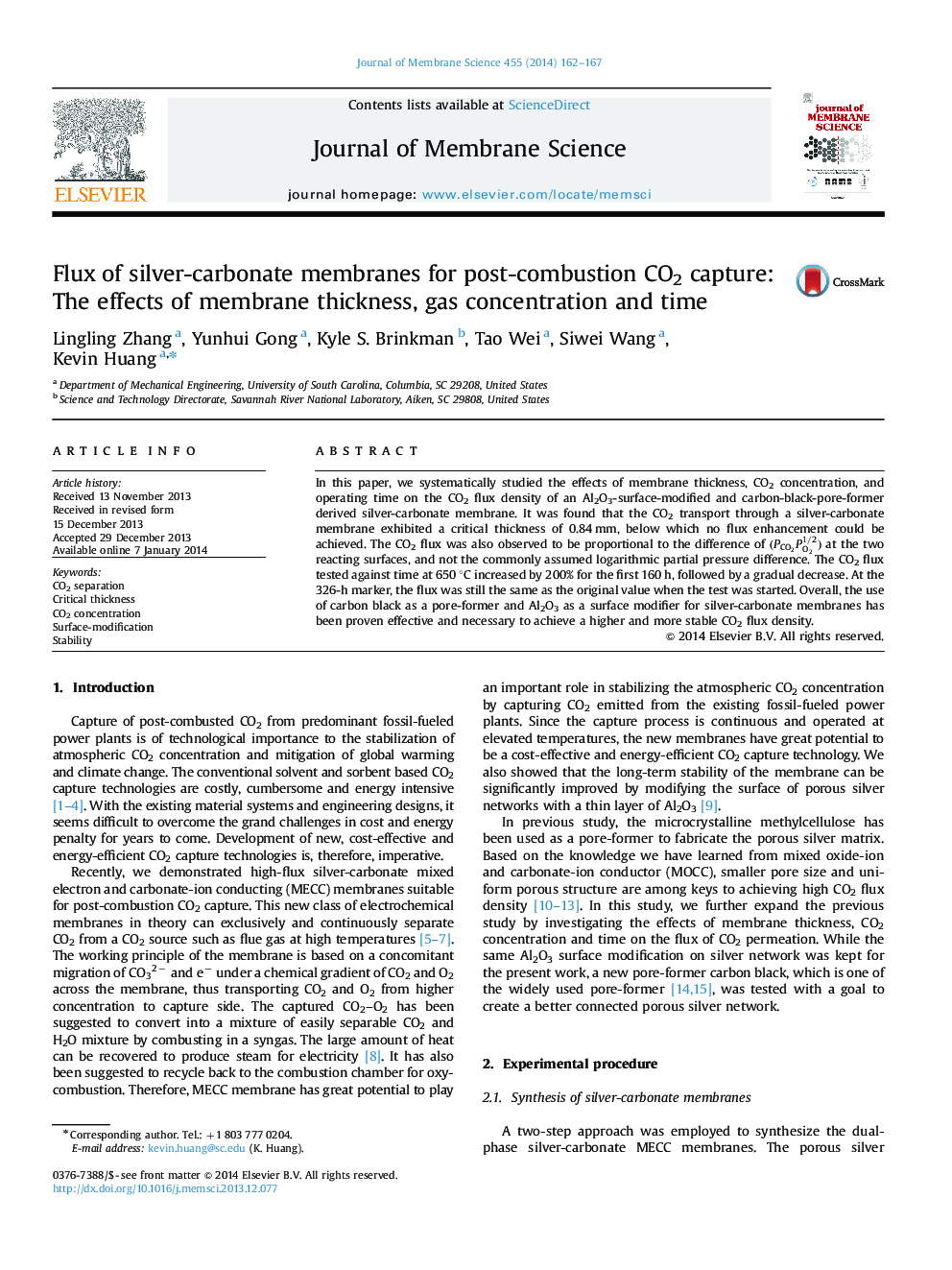| Article ID | Journal | Published Year | Pages | File Type |
|---|---|---|---|---|
| 633895 | Journal of Membrane Science | 2014 | 6 Pages |
•Carbon black as a pore former can produce a more uniform porous silver network.•Al2O3 coating as a surface modifier can improve the retention of molten carbonate.•The critical thickness of a metal-carbonate membrane is first determined.•The dependence of CO32−CO32− conductivity on PCO2PCO2 and PO2PO2 is experimentally verified.
In this paper, we systematically studied the effects of membrane thickness, CO2 concentration, and operating time on the CO2 flux density of an Al2O3-surface-modified and carbon-black-pore-former derived silver-carbonate membrane. It was found that the CO2 transport through a silver-carbonate membrane exhibited a critical thickness of 0.84 mm, below which no flux enhancement could be achieved. The CO2 flux was also observed to be proportional to the difference of (PCO2PO21/2) at the two reacting surfaces, and not the commonly assumed logarithmic partial pressure difference. The CO2 flux tested against time at 650 °C increased by 200% for the first 160 h, followed by a gradual decrease. At the 326-h marker, the flux was still the same as the original value when the test was started. Overall, the use of carbon black as a pore-former and Al2O3 as a surface modifier for silver-carbonate membranes has been proven effective and necessary to achieve a higher and more stable CO2 flux density.
